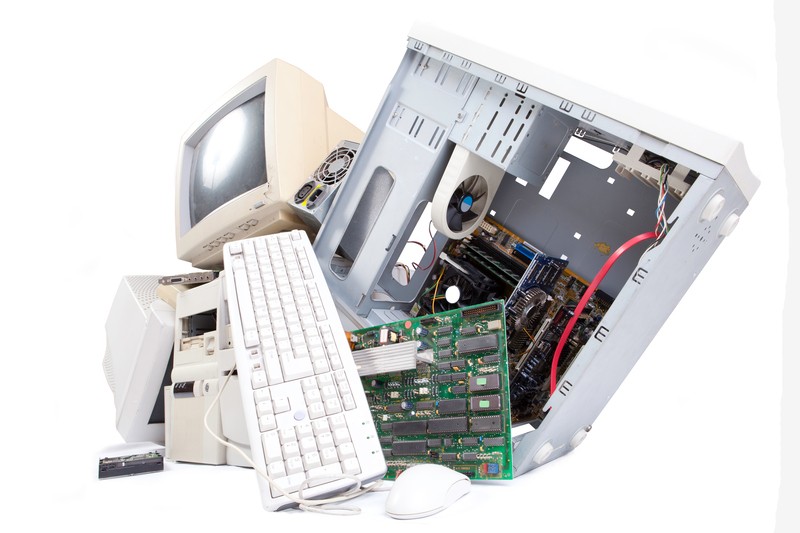Eco-Efficient Work Environments: Techniques for Lessening Office Waste
As businesses adapt to the rising tide of environmental consciousness, the focus has shifted towards creating eco-efficient work environments. A central aspect of this transformation involves discovering techniques for lessening office waste and optimizing resources in ways that decrease environmental impact. This comprehensive guide explores proven strategies, actionable tips, and innovative solutions for making your workplace greener, more sustainable, and impressively efficient.
Why Focus on Eco-Efficiency and Reducing Office Waste?
Offices are often responsible for substantial waste, spanning paper, plastic, electronics, and food. According to the Environmental Protection Agency (EPA), the average office disposes of hundreds of pounds of waste per employee annually. Besides the environmental benefits, adopting eco-friendly office practices leads to cost savings, increased employee morale, and a modern, responsible brand image.
- Environmental Responsibility: Reduces landfill contributions and conserves natural resources.
- Economic Benefits: Saves money through reduced consumption and waste management costs.
- Corporate Image: Appeals to eco-conscious clients and prospects.
- Employee Engagement: Encourages participation in meaningful initiatives.

Key Techniques for Creating an Eco-Efficient Work Environment
Transitioning towards an eco-efficient workplace can be achieved in practical, cost-effective steps. The following sections detail approaches and best practices for reducing office waste and maximizing sustainability.
1. Conducting a Waste Audit
Before implementing changes, conduct a thorough waste audit to assess your current waste streams. This evaluation helps pinpoint sources of excessive waste and identifies opportunities for improvement.
- Track daily, weekly, or monthly waste volumes.
- Sort and categorize waste into recyclable, compostable, and landfill materials.
- Analyze the largest sources: paper, packaging, electronics, food, etc.
Once armed with actionable data, you can prioritize your efforts for maximum impact.
2. Going Paperless - The Digital Transformation
One of the most effective ways to lessen office waste is through a paperless office initiative. The shift to digital has both environmental and operational advantages.
- Cloud Storage Solutions: Use platforms like Google Drive, Dropbox, or Microsoft OneDrive for document management.
- Electronic Signatures: Implement digital approval and signature platforms such as DocuSign or Adobe Sign.
- Virtual Collaboration: Utilize digital whiteboards, project management tools, and internal chat platforms instead of memos and printed reports.
- Default to Digital: Set printers to double-sided by default, and encourage digital sharing over printing.
Transitioning to a digitally driven workplace not only eliminates unnecessary printing but also streamlines information sharing and boosts productivity.
3. Optimizing Printing Practices
While total elimination of paper may not be possible for every office, eco-efficient print management remains crucial.
- Enforce double-sided printing as default.
- Set up network printers with secure release functions to eliminate abandoned print jobs.
- Use recycled paper and refillable ink cartridges.
- Encourage black-and-white printing over color where possible.
- Place centralized print and recycle stations to monitor and consolidate print usage.
These adjustments can significantly reduce paper consumption and minimize office waste streams.
Recycling and Reusing: The Core of Waste Reduction in Offices
4. Establishing a Robust Recycling Program
Any eco-friendly office environment requires a well-implemented recycling strategy. This goes beyond simply placing bins around the office.
- Clearly label all recycling bins and provide information on acceptable materials.
- Train staff periodically on which materials can be recycled (paper, plastics, glass, metals, e-waste).
- Partner with reputable recycling service providers for proper disposal of specialty items such as batteries, electronics, and printer cartridges.
- Host recycling drives for hard-to-recycle items.
Consistent education and visible signage can increase participation and minimize contamination, maximizing the effectiveness of the program.
5. Encourage Reuse and Repurposing
Moving from a single-use culture to a reuse mentality is central to eco-efficiency.
- Replace disposable plates, cups, and cutlery with durable, reusable alternatives.
- Encourage employees to bring their own mugs, water bottles, and lunch containers.
- Set up an office supply swap area for gently used binders, folders, and office supplies.
- Donate surplus or outdated office furniture and technology to schools, charities, or other organizations.
The circular economy approach not only extends the life cycle of items but also fosters a culture of sustainability within and beyond the workplace.
6. Composting Organic Waste
A surprising portion of office waste can be composted, further reducing landfill outputs.
- Set up sealed compost bins in kitchens and break rooms for food scraps, coffee grounds, and compostable utensils.
- Partner with local composting services or community gardens for collection and processing.
- Educate staff on what is and isn't compostable to prevent contamination.
Implementing composting addresses food and organic waste, while also supporting local sustainability initiatives.
Eco-Efficient Procurement and Sustainable Office Supplies
7. Purchasing Sustainable Products
Sourcing environmentally friendly office supplies is crucial for reducing resource depletion and minimizing waste.
- Choose supplies made from recycled or biodegradable materials: From notepads to pens to packaging, opt for products with a high recycled content.
- Purchase refillable: Pens, markers, toner cartridges, and cleaning supplies in refillable options cut down on single-use packaging.
- Seek third-party certifications: Look for eco-labels like Energy Star, FSC (Forest Stewardship Council), or Green Seal.
- Buy in bulk: Ordering in larger quantities reduces packaging waste and transportation emissions.
A mindful procurement policy supports the creation of a zero-waste office and sets a standard for vendors and competitors alike.
8. Rethinking Packaging and Deliveries
Modern offices receive myriad packages, each typically encased in layers of packaging. To minimize related waste:
- Consolidate orders to reduce packaging frequency.
- Return, reuse, or recycle all supplier packaging when possible.
- Prefer suppliers offering recyclable or compostable packaging materials.
- Establish internal guidelines for handling inbound and outbound packaging waste.
These practices help create a streamlined, eco-conscious supply chain within your office environment.
Energy and Resource Efficiency: Hidden Ways to Reduce Office Waste
9. Reducing Electronic Waste (E-Waste)
The rapid advancement of technology has fueled a rise in e-waste -- old computers, phones, printers, and more. Responsible management is imperative.
- Designate collection days for obsolete electronic items.
- Partner with certified e-waste recyclers to ensure safe disposal and material recovery.
- Donate workable electronics to nonprofits.
- Refurbish and upgrade instead of replacing devices whenever possible.
Proper handling of electronics not only prevents toxic substances from reaching landfills but also promotes resource recovery.
10. Energy-Efficient Operations
While not "waste" in a traditional sense, energy inefficiency contributes to unnecessary resource usage and higher emissions.
- Switch to LED lighting and motion sensors: These save substantial electricity and reduce bulb waste.
- Implement power management settings on all computers and devices: This minimizes unnecessary energy draw.
- Encourage "power down" habits: Remind employees to turn off equipment at the end of the day.
- Optimize office heating, cooling, and ventilation systems for efficiency.
An energy-efficient office dovetails with lessening waste by reducing the need for excess resource consumption in the first place.
Cultivating a Green Office Culture
11. Employee Engagement and Education
For any eco-efficient office initiative to succeed, staff involvement is vital.
- Host regular training sessions: Update employees on sustainability practices and policies.
- Promote green challenges and competitions: Offer rewards for departments that achieve the greatest waste reductions.
- Appoint a "Green Team" or Sustainability Officer: Task with implementing, tracking, and improving office sustainability measures.
- Communicate progress: Share regular updates through internal newsletters or dashboards to keep everyone informed and motivated.
A collective sense of purpose fosters a resilient, waste-conscious culture that transforms everyday habits.
12. Leadership and Policy Commitment
Lasting change for eco-efficient work environments demands strong leadership and clear policy direction.
- Incorporate sustainability goals into company values or mission statements.
- Adopt formal green office policies covering procurement, recycling, waste reduction, and energy management.
- Encourage leadership to lead by example, demonstrating eco-efficient behaviors.
- Regularly review and update policies to align with new best practices and technologies.
With leadership backing, eco-efficiency becomes part of organizational DNA, permeating decisions at every level.
Innovative Approaches and Future Trends in Office Eco-Efficiency
13. Smart Office Technologies
Emerging technologies are empowering organizations with innovative solutions to lessen office waste and boost sustainability.
- IoT-enabled sensors: Monitor and optimize energy and resource usage in real time.
- AI-powered analytics: Identify patterns in waste generation and suggest improvements.
- Automated waste sorting systems: Improve recycling rates and reduce contamination.
- Digital twin technology: Simulate operations to design the most eco-efficient workflows and layouts.
Integrating smart technology in the workplace paves the way for continuous improvement and future-ready sustainability.
14. Flexible and Remote Work Options
The evolution towards hybrid and remote work models offers unique opportunities for minimizing office waste.
- Reduced consumables: Fewer people on-site means less demand for daily supplies, energy, and resources.
- Shared workspaces: Companies that downsize or opt for co-working arrangements inherently reduce resource use.
Encouraging flexible work arrangements can be a surprisingly effective tactic in your broader eco-efficient workplace strategy.

Measuring Progress and Celebrating Success
15. Tracking Waste Reduction Metrics
Quantifying progress is key to maintaining momentum and accountability in your green office initiative.
- Set clear targets: Reduce paper consumption by 50% in one year, divert 80% of waste from landfill, etc.
- Track key performance indicators (KPIs): Monitor waste weight, recycling rates, energy usage, and related costs.
- Leverage sustainability reporting software: Automate data collection and visualizations.
Reporting on achievements both internally and externally helps inspire ongoing commitment and attracts environmentally conscious stakeholders.
16. Recognizing and Rewarding Eco-Efficiency
Celebrating milestones not only motivates employees, but also reinforces the company's eco-conscious brand image.
- Publicly recognize departments or individuals with outstanding sustainability efforts.
- Host eco-friendly parties and events to mark key achievements.
- Share certifications and awards on the company website and social media.
These recognitions can galvanize your team and demonstrate the value of eco-efficient practices to your broader community.
Conclusion: Building a Workplace for a Greener Future
Laying the foundation for eco-efficient work environments requires commitment, creativity, and collective action. By embracing methods for lessening office waste, from improved recycling and digital transformation to sustainable procurement and employee engagement, organizations pave the way for meaningful, lasting change. These efforts not only protect the planet but also result in cost savings, enhanced efficiency, and a stronger brand reputation.
Create your office as a catalyst for positive change--where every action supports a more eco-efficient, sustainable, and prosperous future.